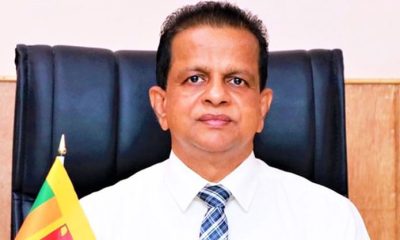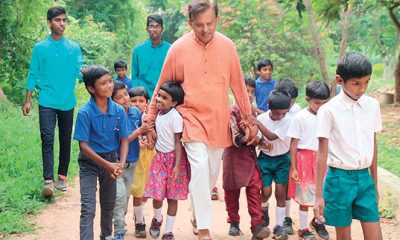Opinion
Naomi de S Wijeyeratne
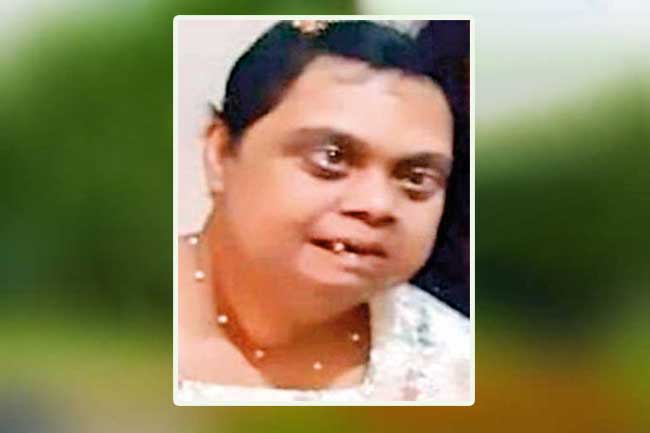
When my sister Naomi was born it was another child in the De Silva Wijeyeratne family to bridge the gender ratio. Our mum who had 10 children before Naomi realized a difference in her during the routine baths and later she was diagnosed as a special needs child. This was a shock to my parents as they did not know about it.
Naomi taught our late parents that they had an important role in this world. They were starving for information about down syndrome children and joined an association for families with children who had different needs just to exchange ideas. Perhaps this awareness changed the way our late parents raised the her, where she was always the center of attention and was “special” in every sense of the word.
Naomi had to work on things that we took for granted: to crawl, walk and talk – the wait and the extra effort made on each milestone was a cause for celebration. There was never a dull moment growing up with her. Since she could not express or communicate in the traditional sense; her language was a top-secret in our household. Dressing her like a Barbie doll with ribbons and bows, going for walks with her and piggybacking her home were some of our early memories with her.
Despite the fears and worries of the family having such a special child “The Sumaga” and “Dayamina” centers for the differently abled played a major role in her gaining independence and autonomy.
She loved going to school and she was loved by all who came to know her as she was so gentle with a lot of humor. It was clear she was happy at these centers and the Sisters of Charity remained a source of stability and familiarity; they became a large part of her world. We as a family would like to thank each and every person at these two centers, who worked tirelessly with her and took care of Naomi. You made her life so rich and full of your love, care, and patience. We know you touched her life in a positive and impactful way and we are sure she touched yours similarly.
Naomi’s love for music and dancing started at an early age and remained a constant source of enjoyment. She was the first to take the dance floor at any party like a duck takes to water. She would be grinning from ear to ear and doing her baila and twirls as she listened to “The Gypsies,” her favorite band. One song she loved was Afric Simone’s – Ramaya. She looked forward to parties, especially the fun of Christmas time that came along with Santa Clause, fireworks, and caroling.
Still remember a bad experience right at front of our gate. When my family and the neighbors were doing the post-mortem of some event Naomi was not concerned about it, and she followed me to the room and sat beside me checking on me and holding my hand. Such was her empathy and sincere affection. Later when Mum was getting feeble she eagerly waited to spend some time at my place during the weekends. This gave me the opportunity to get close to her and spend more time pampering her.
I still remember one day I was late to get to Beddegana. By the time I reached Beddegana she was creating a rumpus and standing near the gate threatening to walk to my place. The moment I parked the car she got in and I could not even say hi to Mum. During these sleep overs both of us did a lot of singing, dancing, colouring, laughing, and screaming at silly stuff. She helped me to cut and chop vegetables and made sandwiches for the household. Ranjit always made sure that her goodies were stocked prior to her arrivals.
One thing my mum never forgot to mention during her twilight years during our visits was “look after Naomi” and with Mum passing away she lost her rock and could never come to terms with it. Insecurity crept in and she got into a shell and was lost in thought. There were many times we wished we could read her mind to keep her happy. Slowly she clung on to her next best and would follow her sister Depika wherever she went like – Mary and her little lamb.
COVID 19 was a severe blow to her as her social life collapsed. Despite how much we tried to explain the pandemic to her it was futile as she could not understand what terms like lockdowns, curfew, and pandemic meant. She started to fade and the much looked-forward visits to my place dried up and my visits to her increased.
Naomi girl you enriched our lives and filled our house with much love and laughter. You kept strong family bonds, a sense of community, and the belief that we were all in this together. You advocated for us to change the world to look beyond disability so you and others can flourish. Thank you for the empathy, love, and patience you taught us.
All these years we never left you alone but today you have decided to take the journey alone breaking our hearts into pieces. We will take a step back Naomi girl and allow you to go to the constant person you were asking for and the only person we could not bring back our “Amma”. Dad, Mum & Anne must be standing near the gates with open arms waiting to welcome you. Raise your wings, fly high and enjoy your new freedom, Naomi Boonja.
Dragging our feet we will join you soon choking to sing the hymns we once sang to put you to sleep, knowing very well we will never sing them again for you. Our house will not be the same and there are no words to express how much we will all miss you. Adios sweet princess until we all meet again on that beautiful shore. You will forever live in our hearts and thoughts.
Vinodini Jayawardena
Opinion
Friendship with all, but India is No.1
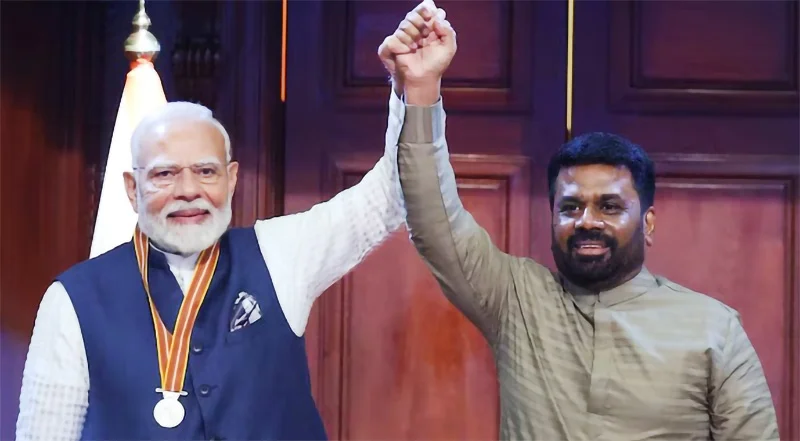
The government did everything in its power to welcome Indian Prime Minister Narendra Modi during the three days in April 4-6 he was in Sri Lanka. The country is known for its hospitality and the government exceeded expectations in its hospitality. There were children to greet the prime minister at the airport along with six cabinet ministers. There was a large banner that described the Indian prime minister in glowing terms. President Anura Kumara Dissanayake also conferred the Sri Lanka Mitra Vibhushana Award, the country’s highest award, to Prime Minister Modi in appreciation of friendship and cooperation. The role that the Indian government under him played in saving Sri Lanka from economic disaster three years ago would merit him nothing less. The gesture was not merely humanitarian; it was also an astute expression of regional leadership rooted in a philosophy of “neighbourhood first,” a cornerstone of Prime Minister Modi’s foreign policy.
India has a key role to play as a stabilising actor in South Asia, especially when regional neighbours falter under economic or political pressure. It has yet to reach its full potential in this regard as seen in its relations with Pakistan and Bangladesh. But with regard to Sri Lanka, India has truly excelled. Prime Minister Modi’s visit to Sri Lanka at this time carried symbolic weight beyond the economic and political. President Dissanayake, in his welcome speech, noted that Prime Minister Modi was the first foreign leader to visit after the new government came to power. By being the first to visit he conferred international importance to the newly elected Sri Lankan leaders. This early gesture conveyed India’s tacit endorsement of President Dissanayake’s government, an endorsement that can be especially valuable for a leader without a traditional elite background. The president also remarked on their shared political origins as both originally came into politics as outsiders to the traditional ruling establishments, creating a bridge between them that hinted at a broader ideological compatibility.
President Dissanayake showed his human touch when he first showed the Mitra Vibushana medal to Prime Minister Modi in its box, then took it out and placed it around the neck of the Indian leader. When the two leaders clasped their hands together and raised them, they sent a message of camaraderie and solidarity, an elder statesman with a long track record with a younger one who has just started on his journey of national leadership. Interestingly, April 5 the date on which the award was conferred was also the 54th anniversary of the commencement of the JVP Insurrection of 1971 (and again in 1987), in which anti-India ideology was a main feature. In making this award, President Dissanayake made the point that he was a truly Sri Lankan leader who had transcended his political roots and going beyond the national to the international.
FINDING TRUST
Six of the seven agreements signed during the visit focused on economic cooperation. These ranged from renewable energy initiatives and digital governance platforms to infrastructure investments in the plantation sector. Particularly noteworthy were agreements on the construction of homes for the descendants of Indian-origin Tamils and the installation of solar units at 5000 religious sites. Both these projects blend development assistance with a careful sensitivity to identity politics. These initiatives align with India’s strategic use of development diplomacy. Unlike China’s approach to aid and infrastructure which has been frequently critiqued for creating debt dependencies India’s model emphasises partnership, cultural affinity, and long-term capacity building.
The seventh agreement has to do with defence and national security issues which has been a longstanding area of concern for both countries. None of the agreements, including the seventh, have been discussed outside of the government-to-government level, though texts of the other six agreements were released during Prime Minister Modi’s visit. Several of the issues concerning economic agreements have been in the public domain eliciting concerns such as the possibility of personal information on Sri Lankan citizens being accessible to India through the digitisation project. However, little is known of the defence agreement. To the extent it meets the needs of the two countries it will serve to build trust between them which is the foundation on which dialogue for mutually beneficial change can take place.
In the past there has been a trust deficit between the two countries. Sri Lankans would be mindful of the perilous security situation the country faced during the time of the war with the LTTE and other Tamil militant organisations, when parts of the country were taken over and governed by the LTTE and the country’s territorial integrity was at stake. This was also a time when Indian military aircraft were deployed in Sri Lankan airspace without the Sri Lankan government’s consent in June 1987, which the Indian government justified as a humanitarian measure, and there were concerns about possible Indian military intervention on a larger scale. This was followed by the signing of the Indo-Lanka Peace Accord the next month in July 1987 which led to the induction of the Indian army as a peacekeeping force into Sri Lanka with government consent.
UNRESTRICTED FRIENDS
The history of Indian intervention in Sri Lanka’s ethnic conflict has given an impetus to Sri Lanka to look to other big powers to act as a counterbalance to India. In more recent years India has expressed its concern at naval vessels from China coming into Sri Lankan waters on the grounds of doing research which could be used against India. Sri Lanka’s engagement with China has strained ties with India, particularly when Chinese infrastructure investments, such as the Hambantota Port, appears to have the potential to serve dual civilian-military purposes. Given China’s growing global reach and its ambition to project influence through the Belt and Road Initiative, Sri Lanka’s geography makes it a critical hub in the Indian Ocean. Hopefully, with the signing of the defence agreement between India and Sri Lanka, these fears and suspicions of the past will be alleviated and soon come to an end.
The position that the government headed by President Dissanayake has taken is to be friends with all. The principle of “friendship with all, enmity with none” is not new, but the stakes are higher today, as global competition between major powers intensifies. India, by virtue of geography and history, will always be Sri Lanka’s first and most important partner. It was India, and not China, not the West, that provided an emergency economic lifeline when Sri Lanka’s foreign reserves evaporated in 2022. That support, amounting to over $4 billion in credit lines and direct aid, was delivered quickly and with minimal conditionality. It also demonstrated how regional proximity can enable faster, more context-aware responses than those offered by multilateral institutions.
The world has become a harsher and more openly self-interested one for countries, even ones that were thought to have indissoluble bonds. Sri Lanka’s biggest export markets are in the United States and European Union and it has received large amounts of economic assistance from Japan and China, though unfortunately some of the loans from China were used inappropriately by former Sri Lankan governments to create white elephant infrastructure projects. Burdened now with enormous debt repayments that bankrupted it in 2022, Sri Lanka continues to need economic resources and markets from around the world. President Dissanayake’s government will understand that closeness to India need not mean an exclusive relationship with it alone. In a multipolar world, friendship (and doing business) with all is both a virtue and a necessity. But among friends, there must always be a first —and for reasons of history, culture, religion, geography and strategic logic, that will be India.
by Jehan Perera
Opinion
Power corrupts …

Only America could re-elect an extremist like Trump.
There are planned protests across the US today against President Donald Trump and his adviser billionaire Elon Musk.
More than 1,200 “Hands Off!” demonstrations have been planned by more than 150 groups – including civil rights organisations, labour unions, veterans, fair-election activists and LGBT+ advocates.
This includes a planned protest at the National Mall in Washington as well as locations in all 50 states.
They are in opposition to Trump’s actions: slashing the federal government, his handling of the economy and other issues.
Musk has played a key role in Trump’s second administration, leading efforts to downsize the federal government as head of the newly created Department of Government Efficiency.
Organisers hope these demonstrations will be the largest since Trump came to office.
Speaking of Musk, let’s see how Trump’s second term has impacted America’s richest men …?
Countries across the globe are planning their response, or lack thereof, to Donald Trump’s tariffs.
China responded to Trump’s 34% tariff with its own levy of the same percentage on US imports.
According to state news agency Xinhua, China has accused the US of using tariffs “as a weapon” to suppress Beijing’s economy.
The country’s foreign ministry added that the US should “stop undermining the legitimate development rights of the Chinese people”.
It also warned there were no winners from and no way out for protectionism.
China also claimed that the US tariffs violated World Trade Organization rules – rules it itself has broken a number of times.
Professor Wang Wen, trade expert at the Chongyang Institute for Financial Studies, spoke from Beijing to Kamali Melbourne. He outlined why he believed the tariffs would eventually benefit China, and why Beijing would “never yield” to the US president.
“The basic strategy of China’s tariff policy against Trump is to count on reciprocal rules and defend China’s national interest and dignity. China will never yield to Trump on the issue of tariff war,” he said.
However, Xi Jinping is no democratic leader either, given to expansionism by hook or crook.
China’s booming economy has opened up many opportunities to achieve its sinister objectives – massive investments which weaker economies fall into and become easy prey.
Sri Lanka is no exception. Caught in the middle are the smaller nations who are confused and worried how best to stay alive.
Sunil Dharmabandhu
Wales, UK
Opinion
Praise to ex-President Ranil Wickremesinghe!
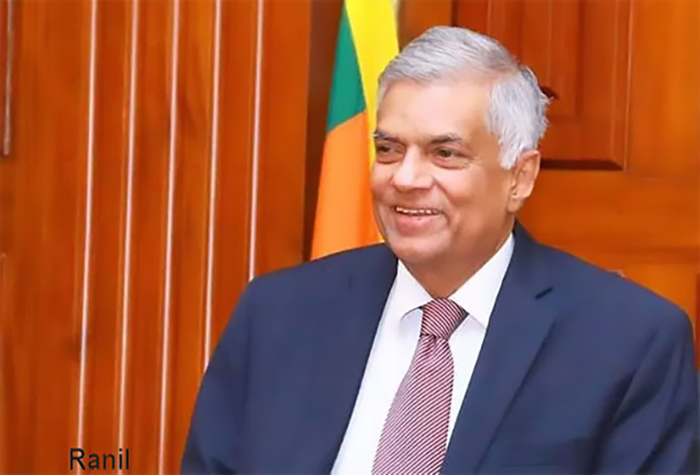
In the despicable absence of an urgent practical response on the part of the JVP-Anura Kumara Dissanayake-led NPP government to the devastating 28th March earthquake in Myanmar, ex-president Ranil Wickremesinghe has made a very timely and sensible proposal regarding how to assist our disaster stricken fellow humans in that country. ex-president Wickremesinghe! Thank you very much for saving, at least to some extent, Sri Lanka’s still unsullied reputation as a sovereign state populated by a most humane and hospitable people. You have again demonstrated your remarkable ability to emerge as an able state level troubleshooter at critical moments, this time though, just by being a mentor. It is a pity that you don’t think of adopting a more universally acceptable, less anglophile version of principled politics that will endear you to the general electorate and induce the true patriots of the country to elect you to the hot seat, where you will have the chance to show your true colours!
The ordinary people of Myanmar (formerly called Burma) are remarkably humble, polite and kind-hearted just like our fellow ordinary Sri Lankans. There’s a natural cultural affinity between us two peoples because we have been sharing the same Theravada Buddhist religious culture for many centuries, especially from the 4th century CE, when Buddhism started making gradual inroads into the Irrawaddy Valley through trade with India. Whereas Buddhism almost completely disappeared from India, it flourished in Sri Lanka and Burma. Nearly 88% of the 55 million present Myanmar population profess Buddhism, which compares to 72% of the 22 million population in Sri Lanka. Wickremesinghe has been mindful enough to take a glance at the historicity of close Myanmar-Sri Lanka relations. And he didn’t mince his words while giving some details.
At the beginning of his statement in this connection (which I listened to in a video today, April 1, 2025), Ranil Wickremesinghe said that our government has expressed its sorrow (but little else, as could be understood in the context). Countries near and far from Myanmar including even partly affected Thailand, and India, China, and distant Australia have already provided emergency assistance. Referring to the special connection we have with Myanmar as a fellow Theravada Buddhist country, he said that both the Amarapura and Ramanna nikayas brought the vital higher ordination ritual from there. We must help Myanmar especially because of this historic relationship.
When an earthquake struck Nepal, the birthplace of the Buddha, in 2015, we sent an army team to assist. On that occasion, Sri Lanka was the second country to provide relief, India being the first, with China becoming the third country to come to Nepal’s help. Today, India, Thailand, Malaysia, China and Australia have dispatched aid by now. Last year Sri Lanka gave 1 million US Dollars for Gazan refugees. We need to take a (meaningful) step now.
Wickremesinghe proposed that the army medical corps be sent to Myanmar immediately to set up a temporary hospital there. The necessary drugs and other materials may be collected from Buddhist and non-Buddhist donors in Colombo and other areas.
Emphasising the ancient friendly relationship between Sri Lanka and Myanmar, Wickremesinghe mentioned that King Alaung Sithu I (of the Pagan Dynasty, 1090-1167 CE) sent help to (Prince Keerthi who later became) King Vijayabahu the Great (1055-1110 CE) to defeat and drive away from the island the occupying Cholas after a 17 year long military campaign. The grateful Lankan monarch Vijayabahu, during his reign, offered the Thihoshin Pagoda (name meaning ‘Lord of Lanka’ pagoda, according to Wikipedia) and a golden Buddha image to the Myanmar king. (This pagoda is situated in Pakokku in the Magway region, which is one of the six regions affected by the recent earthquake. I am unable to say whether it remains undamaged. Though the monument was initiated during Vijayabahu’s lifetime, the construction was completed during the reign of King Alaung Sithu I {Wikipedia}).
Wickremesinghe, in his statement, added that it was after this that a strong connection between Sri Lanka and Myanmar started. In some Buddhist temples in Myanmar there are paintings by ancient Lankan painters, illustrating Jataka stories (Stories relating to different births of Buddha). Among these, Wickremesinghe mentioned, there is a painting depicting the duel between (the occupying Chola king of Anuradhapura) Elara and (his young native challenger from Ruhuna prince) Dutugemunu. (Although Wickremesinghe did not talk about it, a fact well known is that there is a copy of our Mahavamsa in Myanmar. In reporting the ex-president’s speech, I have added my own information and information from other sources. I have put this within parentheses)
Let’s hope President Anura Kumara Dissanayake is wise enough to derive some benefit from his predecessor’s mentoring in the name of our beloved Motherland.
Rohana R. Wasala
-

 Business2 days ago
Business2 days agoColombo Coffee wins coveted management awards
-

 Features3 days ago
Features3 days agoStarlink in the Global South
-

 Business4 days ago
Business4 days agoDaraz Sri Lanka ushers in the New Year with 4.4 Avurudu Wasi Pro Max – Sri Lanka’s biggest online Avurudu sale
-

 Business5 days ago
Business5 days agoStrengthening SDG integration into provincial planning and development process
-

 Business4 days ago
Business4 days agoNew SL Sovereign Bonds win foreign investor confidence
-

 Sports6 days ago
Sports6 days agoTo play or not to play is Richmond’s decision
-

 Features3 days ago
Features3 days agoModi’s Sri Lanka Sojourn
-

 Sports5 days ago
Sports5 days agoNew Zealand under 85kg rugby team set for historic tour of Sri Lanka




